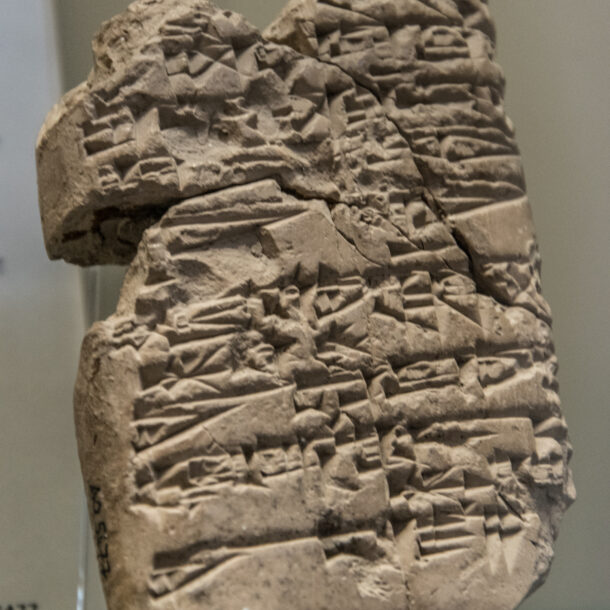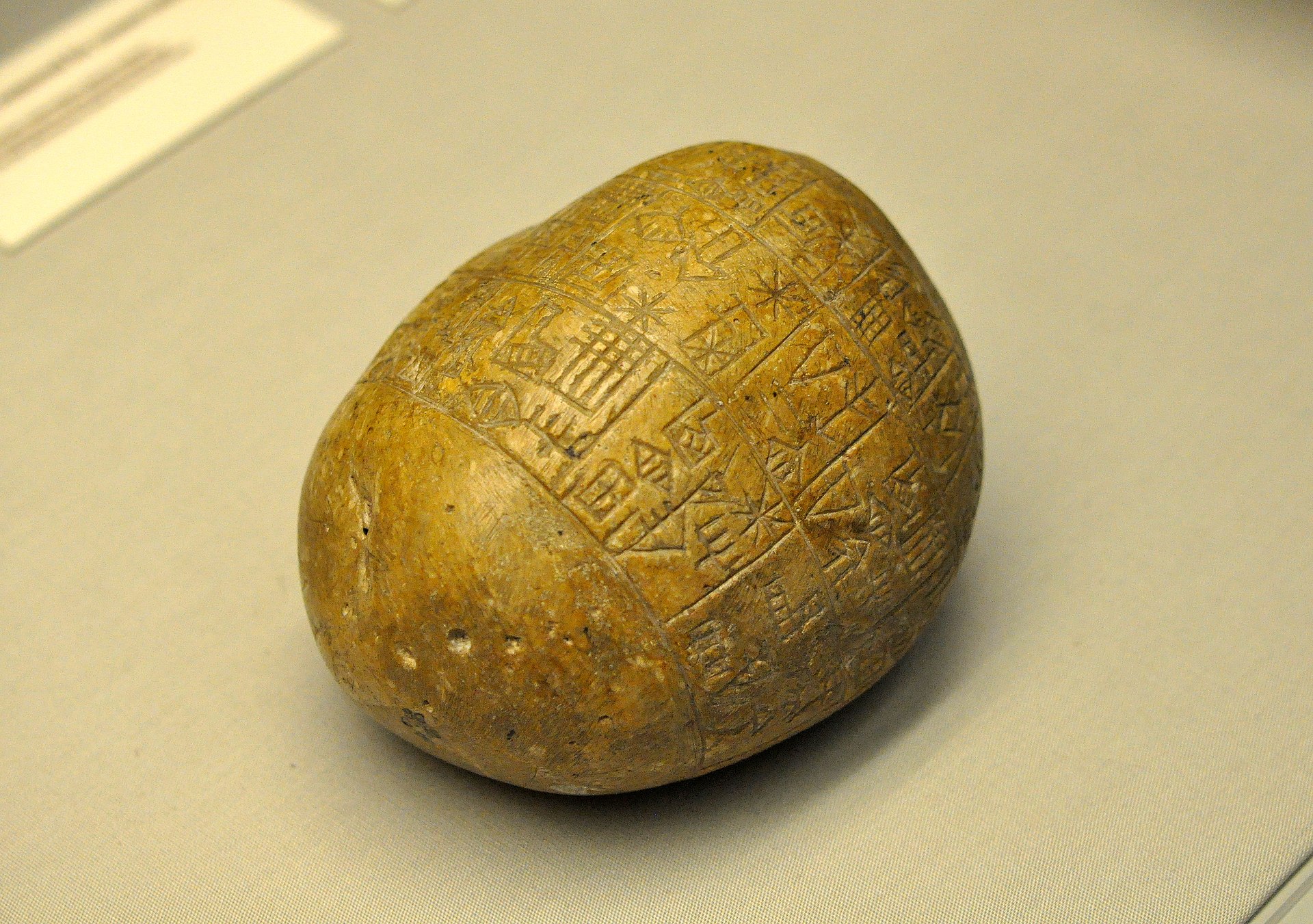First let’s address a query that I had when I first saw the name Akkadia. I had heard of Arcadia, that mythical place that symbolised the Golden Age of the ancient Greeks, and crops up in discussions of Shakespeare’s Forest of Arden in his pastoral comedy As You Like It. While the names sound the same, the Akkadian Empire was no paradise of young lovers, faithful shepherds, and “all the world’s a stage”. It was perhaps the first real empire in the world, uniting the great cities of the previous Dynastic Eras, and pushing its borders further outwards to occupy a much larger area than any of the preceding rulers.
Akkadia then was an organised urban empire, while Arcadia would have been like Mesopotamia before the settled agricultural way of life had won over the people.
Today’s tablet is in the Louvre and is the earliest known example of a bilingual text, with Sumerian on the left and Akkadian on the right.
There is a joke, or rather an observation, about English not being one language but three languages wearing a trenchcoat. No one seems to agree on which three languages they are, but a fair guess would be Germanic via the Anglo-Saxons, French via the Normans, and Latin via the Romans. The Akkadian trenchcoat, by the later stages of the empire, while not quite so stuffed as English, certainly had a small Sumerian hiding inside.
This cross-pollination is thanks to the fact that many, particularly those educated as scribes, or members of the priesthood, would have been bilingual. Even after Sumerian died out as a living language, spoken and written Sumerian lived on – much as Europe stuck with Latin as a lingua franca long after the last native speaker had been ferried across the Styx.
Like Latin, Sumerian also died out but unlike Latin it was completely lost for a long time, save for the occasional word in modern Arabic and Hebrew which survive as second-hand loan words via Akkadian.
The sun set on the Akkadian Empire in the 22nd century BC, after a scant 180 years, with either a bucolic return to pastoral life or a slow slide into anarchy, depending on your perspective (hint – it was the second). The theory goes that 200 years of drought made sustaining grain-based agriculture impossible across much of the empire, particularly further north where the twin rivers dwindled away until they could no longer support much of a population. In the south, Gutian hordes descended on Akkadia, “carried off its kingship”, released the animals into the wild, and brought about famine and darkness across Sumer.
This dark age would not last forever. While the empire would never be made whole again, two new empires would spring up as if from the neck of a hydra. The Babylonians took the south, and the Assyrians the north. So that’s the next two days topics cued up nicely.

